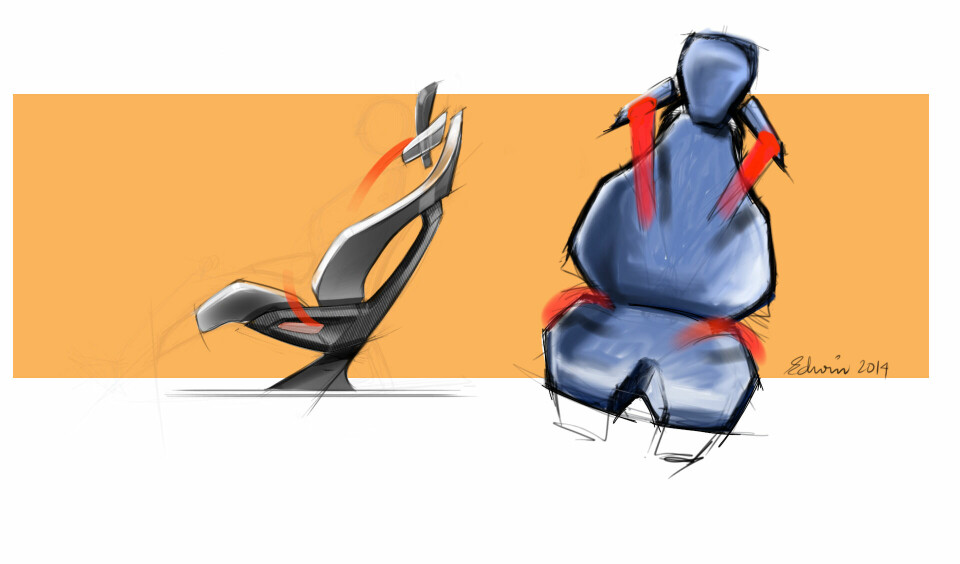
Car Design Review 4 highlights: Richard Chung, Adient
From the Car Design Review 4 yearbook: the seating expert looks to the future. Are you sitting comfortably? Then we’ll begin
“We want to be better and, as the car industry transforms to autonomous solutions, we have to change also. We are still the biggest seating supplier in the world. We make something like 25 million car seats and components every year. Just in China we have 60 plants. We are assembling a team with the best engineers and designers employing many of the guys I used to work with. I had to ‘put the band back together’.
“Adient is the new name for our company, derived from a Latin root word meaning ‘to move positively toward a stimulus’. We were a multi-business company before, as Johnson Controls International (JCI), but as of 31 October 2016 Adient was born as an independent, publicly-traded company. Now JCI is completely out of the automotive interior business, Yanfeng focuses on interior components and Adient focuses on seating.
“I spent 17 years with Johnson Controls and the last three with Yanfeng’s interior business [in which Adient still holds a 30 percent stake], so I’ve been in the seating business for a long time.

“The car industry has been really stagnant for the last 60 years or so, relying on the same old technology, but now we are going through a complete transformation. You could say it’s ‘automobile 3.0’. The first stage was just getting the car going, while the second saw all these changes to powertrain and other technologies, making cars serve different lifestyles and become more stylish. Now, in the third stage, we’re heading towards a vehicle which is going to have a very different value to the user. It’s not only the type of car but how the car is being used and serviced to the consumers. We have to have a different approach to meet all those expectations.
“We’ve seen a lot of carmakers announcing partnerships and alliances, and we expect to do the same. I think it’s a reflection of what’s going on in the wider world. Technologies and trends are converging into a completely different value offering to consumers. The ‘Internet of Things’ integration of technology, big data, artificial intelligence and the shared economy, even consumers making their own parts at home via 3D printing – all these things are happening. So we cannot stick to our traditional business model. We need innovation. I think we will definitely see lighter seat structures – we are talking about magnesium and aluminium composites already – and more exotic materials, but it’s a balance of where and how you use them and their cost.

“About 85-90 percent of car journeys are currently made by single drivers within a vehicle and that’s not going to change much. But if you were in a room at home and had to place a chair within it, you wouldn’t put the chair right up against a wall or in a corner, because you’d want to enjoy all of the space. That’s the type of thinking we’re taking to autonomous vehicle interiors.
“Pulling the team together on a global scale is difficult. I’m now based in Burscheid, near Cologne in Germany, and we have a big, advanced product development centre in Plymouth, Michigan, US and another in Asia Pacific. We have a large presence in Shanghai but we also have operations in Japan, Korea and India. We employ about 140 designers and 60 engineers, so there are roughly 200 members in our innovation and design team.

“We have more designers than engineers because we want to create fresh new innovations. As we go into the autonomous and electric car era we have to change the game, and how we play the game. The zero-gravity seating idea on our AI17 concept – ‘Adient Innovation 2017’ – is one example. The AI17 is a Level 3 autonomous luxury vehicle, where you can sit and relax or have conversations with your business partner, whereas Yanfeng’s XiM17 – where we partnered to provide the seating solutions – is more about the flexibility within the vehicle space. At Level 3 autonomous, you are still assuming some driving.
“Level 4 means almost no driving. The smartphone for adjusting the seat position is integrated into AI17’s armrest for demonstration purposes, but the idea is that you would use your own phone in this cradle with an app which would also provide your identification. The seat comes out to greet you as you open the door, knowing you are coming, and then you adjust the seat to your preferences.

“In Frankfurt later this year we will show a different concept, more centred around a shared vehicle theme. To show two concepts in one year is unusual for us – we usually take the same concept and do a full world tour – but this time Adient felt it needed to show its presence with a variety of innovations. We’ve got a bit more budget now, and as part of our growth plan we need to staff-up on our creative side.”
Car Design Review 4 contains the best concept and production cars of the year, as chosen by the world’s leading designers, trends, student work, and much more. And it’s available now.





